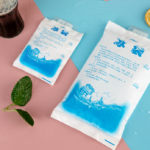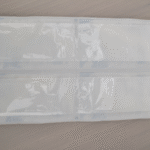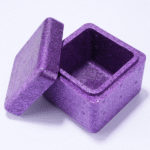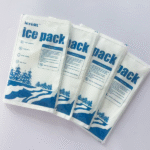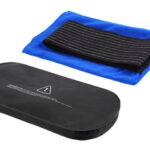Dry Ice Packaging Near Me: The 2025 Buyer’s Guide for Food & Pharma Shipping
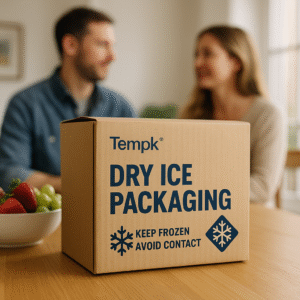
-
What Is Dry Ice Packaging—and Why It Works
-
How to Find Dry Ice Packaging Near You (Fast)
-
Choosing the Right Shipper: Food vs. Pharma
-
How Much Dry Ice Do You Need? (Quick Table)
-
Safe & Compliant Shipping (2025 Rules)
-
Pro Packing Checklist
-
FAQ
-
About Tempk
1) What Is Dry Ice Packaging—and Why It Works
Dry ice is solid CO₂ that sublimates (solid → gas) around –78.5 °C. Because it doesn’t melt into liquid, it keeps payloads dry while holding deep‑freeze temperatures for long routes. That’s why it’s the go‑to for ice cream, seafood, meats and temperature‑sensitive pharma where staying frozen really matters. (Concepts consolidated from your drafts.)
2) How to Find Dry Ice Packaging Near You (Fast)
Use a two‑track approach:
A. Local same‑day pickup
-
Search “dry ice + your city” and call welding supply stores, grocery chains, ice distributors for block/pellet availability.
-
Ask if they also sell EPS/PU foam coolers or liners. (Local‑sourcing idea adapted from your drafts.)
B. Online specialty suppliers
-
Order ready‑to‑ship kits (insulated shipper + dry ice packs/liners) delivered 1–2 days before your ship date—ideal if local supply is thin or you ship often.
SEO tip for “near me” queries: Ensure your Google Business Profile is complete (address/phone/hours/categories), keep reviews active, and embed consistent NAP data on the page. Local ranking is driven by relevance, distance, and prominence—not repeating “near me.”
3) Choosing the Right Shipper: Food vs. Pharma
For frozen food (–18 °C or below):
-
Insulation: EPS (polystyrene) is cost‑effective; PU/vacuum‑panel shippers last longer for 48–72 h legs.
-
Placement: Keep product bagged, separate from dry ice with cardboard/paper layers to prevent freezer burn. (Materials & practices summarized from your drafts.)
For pharma/biologics (some require ≤ –60 °C):
-
Prefer tested dry‑ice shippers, and add data loggers for traceability.
-
Confirm carrier acceptance and destination rules before booking (airlines/operators may have specific variations). IATA
Hybrid loads (frozen + chilled parts):
Combine dry ice (frozen items) with PCM/gel packs (2–8 °C components) to avoid over‑freezing sensitive items. (Technique consolidated from your drafts.)
4) How Much Dry Ice Do You Need? (Quick Table)
Rule of thumb: plan 5–10 lb (2.3–4.5 kg) per 24 h in a quality insulated shipper; add +24 h buffer for delays. Exact need varies by shipper size, ambient temps, and how full you pack the box.
| Transit time | Recommended dry ice (range) | Notes |
|---|---|---|
| ≤12 h | 3–6 lb (1.4–2.7 kg) | Short hauls / well‑insulated, payload pre‑frozen |
| ~24 h | 5–10 lb (2.3–4.5 kg) | Baseline per UPS/FedEx guidance UPSFedEx |
| ~36 h | 8–15 lb (3.6–6.8 kg) | Consider thicker insulation |
| ~48 h | 10–20 lb (4.5–9.1 kg) | Prefer PU/VIP shippers |
| 72 h+ | 20–35 lb (9–16 kg)+ | Use high‑performance systems / split replenishment |
Always pre‑chill contents and fill voids to reduce sublimation.
5) Safe & Compliant Shipping (2025 Rules)
-
UN Number & Proper Shipping Name:
UN1845 / Carbon Dioxide, Solid (Dry Ice) — (kg)Air Transport (IATA):
Comply with IATA Packing Instruction (PI) 954. Packaging must be capable of venting to prevent pressure build-up. The air waybill must declare UN1845, the proper shipping name, the number of packages, and the net weight of dry ice. Follow any additional requirements specified by the operator or airline. (Reference: IATA Dangerous Goods Regulations – PI 954)U.S. Ground Transport (49 CFR):
For quantities ≤ 2.5 kg per package used as a refrigerant, most requirements may be waived if specific marking conditions are met. Quantities exceeding this threshold must comply with the applicable provisions of 49 CFR.Operational Safety Guidelines:
-
Wear insulated protective gloves when handling.
-
Maintain adequate ventilation.
-
Do not seal packages completely—ensure CO₂ gas can be safely vented.
-
Prevent direct contact between dry ice and food or specimen surfaces.
-
6) Pro Packing Checklist
-
Pre-Shipment Preparation & Packaging Instructions
-
Pre-freeze all contents before packing.
-
Select an appropriate insulated shipping container: EPS (Expanded Polystyrene), PU (Polyurethane), or VIP (Vacuum Insulated Panel).
-
Place a protective separation layer (cardboard or heavy kraft paper) between product and refrigerant. Position dry ice on the top and/or sides and fill all void spaces to minimize air gaps.
-
Clearly label with UN1845 and net weight of dry ice (kg). For air shipments, declare in accordance with IATA PI 954 requirements.
-
Choose the correct service level: prioritize next-day delivery or within 48 hours; for high-risk transit lanes, add +24 hours buffer and include a temperature data logger.
-
Pre-notify the consignee to confirm availability (consider public holiday closures) and ensure customs clearance timelines are met.
-
7) FAQ
Q1. Can I ship dry ice internationally?
Yes. Most carriers accept dry ice as a refrigerant when packaged/declared correctly (UN1845, PI 954). Always check operator variations and destination rules in advance.
Q2. Is it safe to ship food with dry ice?
Yes—common for frozen food. Keep dry ice separated from the product, use a vented container, and label properly. (Best practices summarized from your drafts + carrier guidance.)
Q3. How much dry ice should I buy for two days?
Start with 10–20 lb total for ~48 h, depending on insulation and payload; add extra in hot climates or for potential delays. FedEx
Q4. Gel packs vs. dry ice—when to use which?
Use dry ice for frozen requirements (deep‑freeze). Use PCM/gel packs for refrigerated ranges (e.g., 2–8 °C) or when hazardous‑materials handling is undesirable. (Concepts consolidated from your drafts.)
8) About Tempk
Tempk provides advanced cold‑chain packaging—from durable dry‑ice shippers to reusable coolant solutions—backed by testing and sustainability practices. Talk to our team for a right‑sized kit (food or pharma) and compliance guidance for your lanes.
















